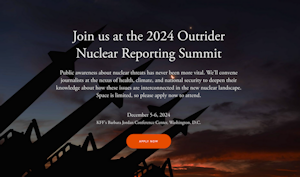SEJournal Online is the digital news magazine of the Society of Environmental Journalists. Learn more about SEJournal Online, including submission, subscription and advertising information.
 |
TipSheet is a biweekly source for story ideas, background, interview leads and reporting tools for journalists who cover news of the environment.
For questions and comments, or to suggest future TipSheets, email the TipSheet Editor Joseph A. Davis at sejournaleditor@sej.org.
Journalists can receive TipSheet free by subscribing to the SEJournal Online, the digital news magazine of the Society of Environmental Journalists. Subscribe to the e-newsletter here. TipSheet is also available through the searchable archive below and via RSS feed.![]()



















 Advertisement
Advertisement 



